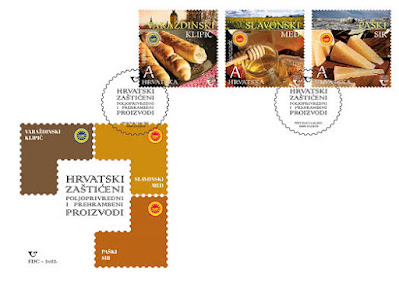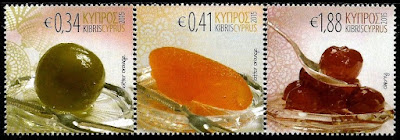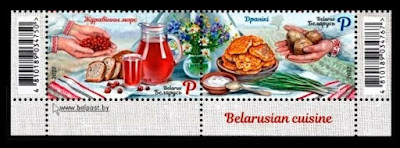Booklet price: €13.92
Edition: 4,500,000
1st Section:
01 - Poppy and Poppy Candy
02 - Chestnut and Candied Chestnut
03 - Gum acacia and gumballs
04 - Marshmallow and Marshmallow
2th Section:
05 - The Mint and Stupidity of Cambrai
06 - Anise and Flavigny Anise
07 - Cocoa Tree and Chocolate Squares
08 - Violet and Violet Candy
3th Section:
09 - Bergamot and Bergamot from Nancy
10 - The Coconut Tree and the Coco Ball
11 - The Liquorice and Its Liquorice Roll
12 - The Almond Tree and The Dragee
Flowers and Sweets, a notebook full of delicacies that will make your mouth water. The world of flavors: the origins of confectionery merge with the beginnings of pharmacy. Pastes, jellies or sweet pastilles made from flowers, plants and honey were all remedies used by physicians such as Hippocrates of Cos (v.455 - 377 BC, Greek physician and philosopher) and Claudius Galen (v.129-v.201, Greek physician and writer). Around the year 1000, fondant kneaded sugar candies, candied fruits, jams and marmalades appeared. Some of these sweets are flavored with rose, violet, lavender, orange blossom, fresh or dried, or in the form of scented waters or oils and even flowers steeped in honey. Sold by apothecaries, sugar is used in the composition of remedies based on fruits, spices and flowers. Sugar is reserved for the nobility, along with fruit jellies and jams. These are also spices and dried fruits cooked in a layer of sugar. The insertion of flowers is also common in these sweets, especially rose and violet. In the 17th century, sugar became more democratic thanks to the plantations of the New World. Confectionery is appreciated for its taste and no longer for its therapeutic role. Books offering recipes are multiplying, giving rise to large compositions in spun sugar, candy or pastillage. Nutmeg rose marmalades, soft pasta with violets or crunchy carnations are a great success. When they are not eaten at the table, confectionery is kept within easy reach. of hand in small pocket bezels. Candies with crystallized flowers are arousing renewed interest (confiserie Florian in the Alpes de Hte-Provence).
01 - The poppy and the poppy candy: the poppy (papaver rhoeas) is a species of dicotyledonous plants of the papaveraceae family, native to Eurasia. It is an annual herbaceous plant, very abundant in freshly disturbed soils from spring, which is distinguished by the red color of its flowers and by the fact that it often forms large colored carpets visible from very far away. It belongs to the group of so-called messicole plants because it has been associated with agriculture for centuries. very old, thanks to its biological cycle adapted to cereal crops, with flowering and seed set taking place before harvest. Like all poppies, the poppy has narcotic effects due to the alkaloids it contains. Poppy petals are part of the composition of the pectoral flowers, in particular in the "tisanes of the four flowers" which in fact includes seven species. The poppy flower inspired many sweets of yesteryear. In Nemours (77-Seine-et-Marne), poppy sweets have been prepared since 1870 and poppy syrup and liqueur since 1996. poppy candy, made from natural products, is a little sweetness with a flowery taste, which also helps to calm coughs and colic in children.
02 - Chestnut and candied chestnut: the common chestnut (Castanea sativa) is a deciduous tree, from the Fagaceae family, which produces fruits widely consumed by humans: chestnuts. When numerous in a delimited territory, it forms a chestnut grove. The chestnuts, dried in clèdes (drying chestnuts), were for a long time the basis of the human diet in certain regions of Europe, generally devoid of cereal agriculture, which led to its being considered as a "food tree" to be valued. Around the Mediterranean, the chestnut tree was nicknamed "breadfruit" (or bread of the poor) because its fruits replaced cereals in times of famine. In the 17th century, Sieur Pierre François de La Varenne (1618-1678, chef and author of a first cookbook) gave us the first indications on the recipes called "marron glacé" and "marron au sec" that he made for the court of Louis XIV. Until the 19th century, candied chestnut was considered like a luxury confectionery made for special occasions. Chestnuts and chestnuts are the fruits of the same tree and its improved variety. At two years old, the chestnut tree receives a very specific graft, in order to obtain a well-formed chestnut. Many varieties of chestnuts are grown: the most popular are those say "peasant women" with the name: Comballe, chestnut from Lyon, Bouche de Clos or chestnut from Chevanceaux, etc. French production is mainly located in Ardèche, Dordogne and Var. A unique experience, with the fragrance, the effluvium and the perfume; then its aroma, taste and flavor. The candied chestnut is a delicate fruit, which must be opened in two, very gently, in order to discover the translucent flesh of the fruit moistened with its candy syrup.
03 - Gum acacia and gumballs: the acacia is a genus of trees and shrubs, belonging to the Fabaceae family, producing gum arabic. This gum comes mainly from the Senegalese acacia (Senegalia senegal, or acacia sap). It has been known since the Third Dynasty of Egypt (2650 BC), it is an essential raw material for the food industry and serves mainly as an emulsifier, especially for citrus oils, as a protective colloid in emulsions and carriers for flavorings. Acacia gum gives the rubbery texture to chewing gum, which coats many sweets, dragees but also medicine tablets. It is used in the composition of food products for its richness in natural, vegetable and organic dietary fibres. It has the advantage of not sticking to the teeth and not causing cavities.
04 - Marshmallow and marshmallow: Marshmallow officinalis (Althaea officinalis), also called Wild Marshmallow (or White Mallow), is a perennial herbaceous plant of the Malvaceae family, common in Europe. It is cultivated as a medicinal plant for its emollient properties, as an ornamental plant for its flowers and sometimes as a vegetable mainly for its roots. This plant was used in the composition of a soft and sweet confectionery, marshmallow paste, made originally from marshmallow root. It was made with the mucilage (vegetable substances) extracted from the marshmallow root, but which, in its form modern, is made of sugar, egg whites and gelatin. It has a spongy consistency and usually the shape of cubes or long, flexible sticks. It is naturally of a fairly neutral taste and white or pink in color but is often flavored and colored in pastel shades, the most common of which are pink, green, blue and yellow.
05 - Cambrai mint and stupidity: mints form a genus (Mentha) of perennial herbaceous plants of the Lamiaceae family. This genus includes many species, many of which are cultivated as aromatic and condiment, ornamental or medicinal plants. The original Bêtise de Cambrai with a refreshing scent of mint, or other flavors, is handcrafted at the Afchain confectionery in Cambrai (59-Nord). The story goes that Emile Afchain made a mistake when making berlingots, accidentally spilling mint when preparing the dough. He said nothing about it, until all the customers who had eaten this “nonsense” with such a good mint taste demanded it. Later Emile Afchain officially created La Bêtise de Cambrai, a delicacy produced around 1830. Since 1992, the Bêtise de Cambrai has been on the list of Culinary Heritage of Nord-Pas-de-Calais, and since 1994 of the national heritage of French confectionery, chocolate and biscuit specialties. Two companies share the "Bétises de Cambrai", Afchain and Despinoy. This candy has the shape of a small rectangular cushion, and it is flavored with mint, with stripes of caramelized sugar. Several new fragrances complete the variations: green apple, orange, lemon, praline, raspberry, violet and tutti frutti.
06 - Anise and Flavigny anise: Anise (Pimpinella anisum) is a species of herbaceous plants of the Apiaceae family, cultivated as a condiment plant for its aromatic leaves and seeds. The plant is sometimes called "green anise". "Anis de Flavigny" are sweets made in Flavigny-sur-Ozerain (21-Côte-d'Or). Each candy is made of a seed of green anise coated with flavored sugar syrup: natural anise, violet, rose, mint, liquorice, orange blossom…. It is a sugar-coating: the anise seed is covered with thin successive layers of sugar syrup. It takes fifteen days for the dragéiste to make from a small seed two milligrams a one gram candy. In 719, Benedictine monks, at the foundation of the Flavigny Abbey, started making this candy using anise brought back by the Roman traveler Flavius. Since 1591, the Benedictines, then the confectioners of the village have succeeded, remaining faithful to the recipe, but with various flavors.
07 - The cocoa tree and chocolate squares: the cocoa tree (Theobroma cacao - called cacao or cocoa tree) is a small evergreen tree of the genus Theobroma (the "Food of the Gods") of the family Sterculiaceae (classical classification) or Malvaceae (phylogenetic classification). It produces edible beans with different flavors depending on the varieties of cocoa tree, from which cocoa, the basic product of chocolate, is made. Cocoa is the powder obtained after grinding the kernels of cocoa beans. fermented and roasted cocoa produced by the cocoa tree. They are extracted from the berries, which are opened at harvest and left to dry. Chocolate (original term Mesoamerica), is a more or less sweet food produced from cocoa beans. The liquid cocoa mass from which the fat is extracted is called cocoa butter. cocoa. Chocolate is made up of the mixture, in varying proportions, of cocoa paste, cocoa butter and sugar; to which may be added spices, such as vanilla, or vegetable fats. Initially consumed as a xocoatl (a spicy drink of Aztec origin) in Mexico and Central America, chocolate became more democratic with the industrial revolution. In the XVI and century it is consumed in solid (dark or milk chocolate) or liquid (hot chocolate) form. Chocolate is found in many desserts such as confectionery, cookies, cakes, ice cream, pies, drinks, etc. Offering chocolate, molded in different ways, is become traditional during certain festivities. Many chocolatiers showcase their talent by making sculptures. The realization of the most beautiful sculpture (piece in chocolate) is the basis of any competition. Chocolate making is one of the disciplines in the "Meilleur Ouvrier de France" competition.
08 - The violet and the violet candy: the fragrant violet (Viola odorata) is a small herbaceous and perennial plant of the Violaceae family forming colonies more or less spreading, with stems forming stolons, with oval leaves, heart-shaped at the base, provided with a long petiole and with fragrant flowers, at the end of a thin stem. violets colonize meadows, woods and hedgerows. Violet is used in perfumery and herbalism. For its food use, the leaves rich in mucilages contain vitamin A, lots of vitamin C, mineral salts and saponins. The young leaves can be added raw to salads or the older, more fibrous, be cooked in soups which they thicken due to their mucilage (they swell on contact with water). The flowers are also used as decoration for pastries, fresh or candied with sugar; but also in confectionery, with violet sweets, such as "Toulouse violets" (1818, crystallized fresh flowers) or Vosges sweets.
09 - Bergamot and Nancy bergamot: bergamot is the fruit of the bergamot tree, a tree of the Rutaceae family. This citrus fruit is mainly grown in the province of Reggio Calabria (Italy) since the 18th century century and only on a narrow strip of the coast (Ionian and Tyrrhenian Seas) where bergamot still supplies a small local industry. The fruit is harvested mainly for the oil contained in its bark, which has a sweet and pungent fragrance. Half of this oil is used in the food sector and half in perfumery and cosmetics. Bergamot essence is used in several products, including bergamot (or bergamot) from Nancy. It is a slightly tart, square, flat, translucent, golden-coloured candy, flavored with bergamot essential oil, which the confectioners of Nancy (Lorraine) have made their specialty from 1830 (the confectioner Barbier-Duval). In 1898, the confectioner Louis Lefèvre-Denise registered the trademark "Bergamottes de Nancy".
10 - The coconut tree and the Coconut ball: the coconut tree (Cocos nucifera) is a species of palm from the Arecaceae family, it is not a tree but a monocotyledonous plant. Its fruit is the coconut: this large oval and hard fruit, light green or orange, turning brown when ripe, measures between 10 and 40 cm long and between 10 and 16 cm wide, weighs up to 1.5 kg and appears on a spathe (large membranous or leafy bract) between the long pinnate leaves; its seed has a brown, fibrous envelope; his white flesh (albumen) fresh or dried (copra) is edible, as well as coconut water (juice) and the embryo. Coconut is rich in potassium, iron, magnesium, phosphorus, copper and zinc, which gives it excellent nutritional value. When the fruit is green, the water it contains is consumed as a refreshing drink. blackberry, coconut almond is edible and serves as an ingredient in many tropical cuisine recipes due to its characteristic scent. The germ of the coconut which develops into occupying the space left by the coconut water, is also edible. It takes on a round shape covered with a thin layer of yellow color. The interior is made up of a whitish fibrous flesh with a sweet taste and steeped in coconut water. Once well dried, the pulp can be stored in an airtight jar away from heat and light. In small pieces, the coconut pulp can accompany a chocolate fondue, grated it is used in sauces. White or grilled, it can also be used frequently in desserts such as biscuits, ice cream, cakes, pound cakes and for decorating cakes. Coconut powder or shavings is marketed, it is used in the confection of pastry and confectionery. Coconut water is a refreshing drink, but it also goes into making of vinegars. Fermented, it forms a translucent gelatin called nata de coco.
11 - Licorice and its roll of licorice: glabrous licorice (Glycyrrhiza glabra) is a perennial plant of the Fabaceae family, of the Faboideae subfamily, with aromatic roots. It is native to southern Europe and Asia. Licorice refers to the root of this plant. Elixir of long life for traditional medicine Chinese and according to Hippocrates of Cos, this root, with its characteristic sweet and bitter taste, has been harvested since antiquity on the Calabrian Ionic coast, where it grows naturally. Liquorice refers to the aromatic extract from the root of this plant, used in confectionery (he or she also refers to confectionery made from of this aroma). Licorice is used in the manufacture of syrup (one of the components of pastis) and candy dough. Chewing sticks and licorice candies.
12 - The almond tree and the dragee: the almond tree (Prunus dulcis) is a species of tree in the Rosaceae family, whose pinkish-white flowers appear before the leaves. It is the first fruit tree to flower in late winter, a time when it can still freeze in the morning. It produces a fleshy stone fruit (or drupe) whose flesh becomes dry when ripe and splits into two valves, releasing a kernel containing an edible kernel. Since antiquity, the tree, first domesticated in the Near East to produce sweet almonds, was cultivated all around the Mediterranean before being cultivated in modern times in many arid regions of the world where it adapts well. Almond sweetness arises as a result of mutation and bitterness being a recessive trait can by selection be eliminated. The almond is very rich in fatty acid unsaturated, proteins, carbohydrates and vitamins. It is an important component of Provençal and Oriental pastries. The new trends are to consume it in the form snack (cereal bar) or almond-based drink (almond milk). Some almond confectionery: dragees, nougats, pralines, marzipan, etc.















































